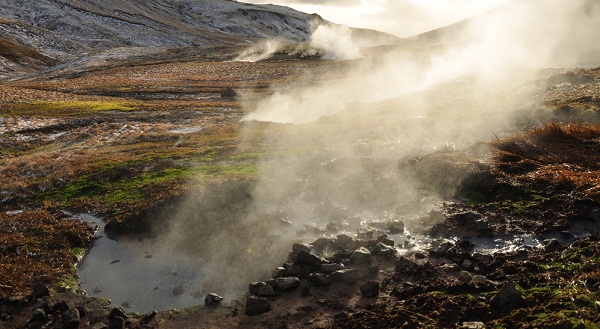The link between geothermal power production and earthquakes is one long since established, but new research is providing fresh insight into how Earth responds to this and other sorts of poking around underground that we do. Most notable, perhaps, is a study that focuses on the practice of disposing of wastewater from natural gas development in what are known as deep injection wells.
This activity had previously been associated with causing small earthquakes in the Midwestern U.S., often mere days or weeks after injection, making the link obvious. But in a new paper in the journal Science [PDF], researchers pinpointed locations in Oklahoma, Colorado and Texas in which pumping fluids into deep injection wells appears to have “critically loaded faults” that were then triggered many months later by large, very distant earthquakes.

“We find that certain areas of fluid injection are sensitive to small changes in stress associated with the passage of seismic waves from remote large earthquakes,” the researchers wrote. “Remote triggering can therefore indicate that conditions within an injection field have crossed some critical threshold, and a larger induced earthquake could be possible or even likely. This underlines the importance of improved seismic monitoring in areas of subsurface fluid injection.”
A second study in the same issue of Science focused on the link between geothermal energy production and earthquakes. Here again, man’s tendency to induce seismic activity in pursuit of energy is well established. For instance, at the Geysers north of San Francisco – the largest single geothermal field in the world – scientists have long noted the link between energy production and earthquakes. In a 2009 interview with Scientific American, David Oppenheimer, a U.S. Geological Survey Earthquake Hazards Team seismologist said:
We’ve been monitoring [The Geysers] since 1975. All the earthquakes we see there are [human] induced. When they move production into a new area, earthquakes start there, and when they stop production, the earthquakes stop…. They’ve been inducing earthquakes since the 1960s, and the largest has been less than a [magnitude] 4.5. Earthquakes are occurring in many, many fractures.
In the new study [PDF], out of UC Santa Cruz, the researchers looked at geothermal production in the Salton Sea area of Southern California over a 30-year period. This is a site that does “flash steam” power production. Here’s how the U.S. Department of Energy describes that process:
Flash steam plants are the most common type of geothermal power generation plants in operation today. Fluid at temperatures greater than 360°F (182°C) is pumped under high pressure into a tank at the surface held at a much lower pressure, causing some of the fluid to rapidly vaporize, or “flash.” The vapor then drives a turbine, which drives a generator. If any liquid remains in the tank, it can be flashed again in a second tank to extract even more energy.
Water that can be recaptured is also injected back underground, but there’s a net loss in the process, i.e., extraction. Of course the researchers found a link between this geothermal operation and seismic activity, but more than that, they said, they might have uncovered a formula for predicting when induced earthquake activity will occur.
Although increased seismicity commonly accompanies geothermal production, induced earthquake rate cannot currently be forecast based on fluid injection volumes or any other operational parameters. We show that at the Salton Sea Geothermal Field, the total volume of fluid extracted or injected tracks the long-term evolution of seismicity.
Most of the earthquakes in the Salton Sea area (as at the Geysers) are small, but understanding the potential of inducing larger quakes could be important – particularly with the San Andreas fault lurking not too far away. “It’s hard to draw a direct line from the geothermal field to effects on the San Andreas fault, but it seems plausible that they could interact,” geologist Emily Brodsky said in a statement.